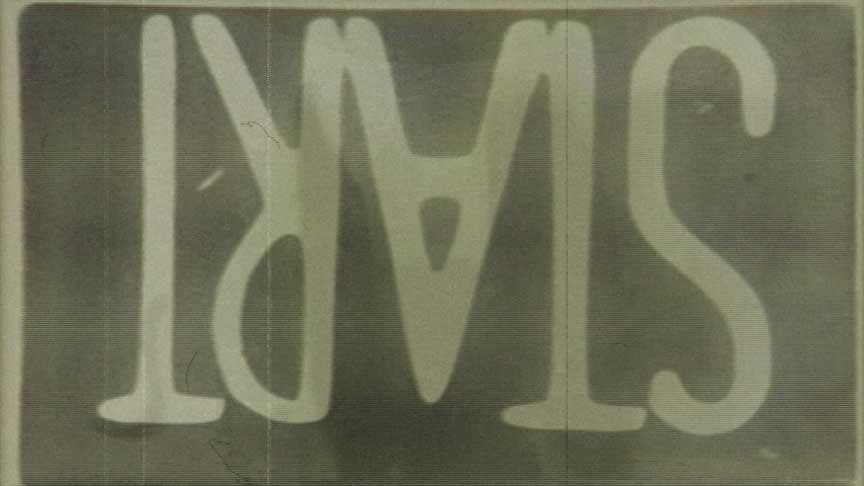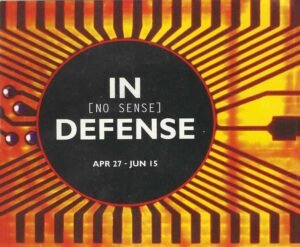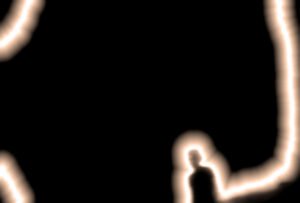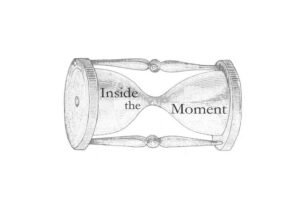All writing is woven from threads of thought spun by its authors. We can imagine that from the beginning approximately or earlier, prehistoric writers were seeking to translate inner rhythms and recurring visions into abstract patterns and concrete testaments of life and imagination. These ancient roots of self-awareness can be traced deep into the earth, where the first signs and symbols were scratched and rubbed into stone, wood, bone and onto the rough inner walls. Actions guided by light from a flickering flame.
We can imagine that the earliest writings consisted of dots, lines and hatch marks arranged into patterns. The calculated application of dyes on bodies or on walls, orchestrated alongside patterns of repeating rhythms of chipping flint and the scratching sounds from the makings of marks. The duplicating movements of obsessive self-absorption on full display. Actions perfectly suited to the logic of those that invented it. Their destinies linked. Abstract at first, gradually becoming pictographic, and then abstracted again in the form of collaborative symbols and then alphabets.
We can suggest that art is tethered to the penitentiary of perception shared by the people who create it. We can include prehistoric artists seeking to translate inner rhythms into an abstract vision of their perceptible realities, life and imagination. Caves were the place of these beginnings, where a desire to imitate nature was satisfied by forging life onto empty screens of hollowed rock, in sanctuaries removed from the communal spaces. Actions guided by light from a flickering flame.
Let’s observe that for prehistoric artists, mostly animals seemed important enough to draw. Animals depicted with repeating legs and multiple horns, which in the light of the flickering flame could project the illusion of movement. The bestial actors performed in dramas unfolding in cave to cave and from millennium to millennium. The recurring menageries weaving a narrative that unfolds in a time without time. By repeating and perfecting the animal forms, they imagined an order brought to a confusing world where humans were but hapless observers. By repeating and perfecting they seized control.
This representation of nature and of thought takes the form of repetition. And obsessive repeating becomes the foundation of language: the struggle to push away from a constant present. By placing something between the now of existence and the focus of perception, cave writers and their readers might reflect upon themselves: create a past, construct a memory, and open up to possibilities of future considerations. Their markings re-present the lived experience in the now of nature, the immediacy of inner thought, and a search for a method to represent the self. It is the construction of a new place from which to name that self. A place that distances the conscious from the unconscious.
A fundamental characteristic of writing, one that is germane to all language, is that of distancing. Distancing, as in the kind of separation that forges a space in between. A space occupied by both the writer and the reader, although rarely at the same time. The distance and the absence are anticipated, mediated. We cannot interpret the meaning of prehistoric symbols today, but we can understand the separation. We are drawn into the timeless desire for mediation.
A fundamental characteristic of motion picture language, one that is germane to all language, is that it must account for the mental processes of the receiver. We can imagine that from the beginning approximately or earlier, streams of images and their associations have moved through the human mind. This is the cinema of prehistory. We can imagine this stream to be a protest against reality: an inner monologue driven in part by an unbearable reality, dictating the disjuncture and fragmentation of lived experience. And the inner monologue driven in part by an indissoluble function, that is the piecing together of disjuncture and fragmentations of perceived experience. It translates and brings together disparate codes as the final act in the construction of meaning.
Let’s presume that the monologue begins not in words, but in concrete images and their combinatory values. This mental process is neither a tabula rasa nor a singular photographic plate. It is a motion picture, which has been ingeniously envisioned and carefully sequenced to emphasize the close-ups and fade outs of flickering emotion, the angles of observation and the flashbacks of recollection. It behaves like a visual script that is always decentering, and running itself between the conscious and unconscious; eventually settling at the margins where the supports of its meaning are disclosed.
A fundamental characteristic of motion picture language, one that is germane to all photographic arts, is that it refers to objects by using the objects to which it refers. It relies on the camera to detach the object from the real world and reactivate it somewhere else. The eye encountering the world through the camera is already writing. The ensuing dialogue running between the camera and the world consists of symbols and metaphors. Today’s technology serves as a response and prosthesis for externalizing our innate, pre-linguistic, anti-realistic, imagery-associated thought. As a written externalization of an inner monologue, montage asks the viewer to engage in an image by image, part by part reading: fragmentary manifestations whose unity lies in its destination.










